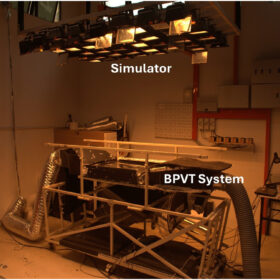UK grid operator calls for 47 GW of solar by 2030, deployed at 4.6 GW per year
The UK National Energy System Operator (NESO) has published its Clean Power 2030 Advice to Government, setting out pathways to decarbonize the power system of Great Britain by 2030. It calls for a threefold increase in the pace of deployment to hit clean energy targets.
Leclanché releases battery cell with niobium-based anode material
The Swiss manufacturer said the cell was developed in partnership with Echion Technologies, which supplied the niobium-based active anode material. It has greater energy density and faster charging compared to LTO technologies.
The Hydrogen Stream: UK to fund 11 green hydrogen projects
The UK government has confirmed new hydrogen plans, while RWE says it has secured construction and environmental permits to build a 100 MW electrolyzer in the Netherlands.
What does the UK budget mean for solar, storage?
Spending commitments outlined by UK Chancellor Rachel Reeves include investment in planning departments, more funds for heat pump grants, confirmation of funding for commercial hydrogen projects, and more cash for the Department of Energy Security and Net Zero.
Perovskite solar cell based on lead iodide treated with 4-fluorobenzylamine achieves 23.62% efficiency
By regulating the secondary growth of lead iodide, an international group of scientists has built a perovskite solar cell with low non-radiative recombination and defect state density. The device reportedly exhibited superior stability in both humidity and thermal stability tests compared to reference cells.
Transport for London launches solar infrastructure tender
Transport for London is seeking a private sector delivery partner to collaborate in developing solar infrastructure to power London Underground’s network. The deadline for applications is Dec. 20.
Cooling bifacial PV thermal solar panels with jet impingement
Scientists created a model to study bifacial PV thermal (BPVT) solar panels using jet impingement and built an experimental setup to validate it. They achieved a thermal efficiency of 62.28%, while electrical efficiency peaked at 11.22%.
UK capacity additions slow but major project pipeline grows
Government data records 17.1 GW of deployed solar capacity in the United Kingdom at the end of September 2024. New domestic installations are down on the same period in 2023, however, a growing pipeline of major projects with planning consent points to significant capacity gains in the future.
Space Solar secures letter of intent from Reykjavik Energy
UK startup Space Solar has reached an agreement with Reykjavik Energy with a view to supplying 30 MW from space-based solar in 2030. Co-CEO Sam Adlen tells pv magazine the next steps include ground-to-air transmission demonstration and a kilowatt-scale solar satellite in orbit in three years’ time.
Record year for UK small-scale battery storage
Surge in battery storage installations shown in installer data from UK accreditation body MCS. While 2024 is comfortably the best year on record, MCS Head of Scheme Alex Hughes tells ESS News she would like to see even more solar installers take on a storage accreditation.










